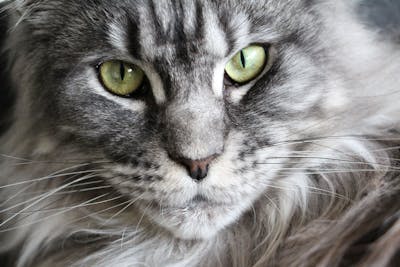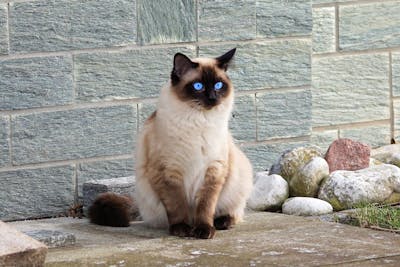Bengal Cat Energy Levels: Understanding the Dynamic Nature of These Wild-Looking Felines

The Bengal cat, with its striking spotted coat reminiscent of its wild leopard ancestors, is a breed that exudes an aura of exotic beauty and untamed energy. These captivating felines are not just visually stunning; they possess a dynamic and active nature that sets them apart from many other domestic cat breeds. Understanding Bengal cat energy levels is crucial for anyone considering welcoming one of these beautiful creatures into their home. This article will explore the energy levels of this popular breed.
Unlike some laid-back breeds content with lounging on the sofa all day, Bengals are known for their high energy, boundless curiosity, and playful antics. Their energy levels are a direct reflection of their wild heritage, and providing them with appropriate outlets for this energy is essential for their well-being. This guide will delve into the specifics of Bengal cat energy levels, exploring the factors that influence their activity and providing practical tips for managing their energetic nature.
This comprehensive exploration will cover everything from their natural instincts and daily activity needs to the importance of interactive play and environmental enrichment. We’ll also discuss how age, health, and individual personality can affect a Bengal’s energy levels. By understanding the dynamic nature of these felines, you can create a stimulating and fulfilling environment that caters to their needs and ensures a happy and harmonious life together.

1. The Wild Roots of Bengal Cat Energy Levels
The high energy levels of Bengal cats can be traced back to their unique lineage. They are a hybrid breed, created by crossing domestic cats with the Asian leopard cat, a small wild cat native to Southeast Asia. This wild ancestry contributes to their athletic build, their strong hunting instincts, and their seemingly boundless energy. These cats are known for their high energy.
Bengal cats retain many of the physical and behavioral characteristics of their wild ancestors. They are agile climbers, skilled jumpers, and enthusiastic hunters (even if their prey is just a toy mouse). Their natural instincts drive them to explore, play, and engage in activities that mimic the behaviors of their wild counterparts. This is a key factor in understanding their high energy.
It’s important to remember that Bengal cats are not simply miniature leopards. They have been selectively bred for generations to be domestic companions. However, their wild heritage remains a significant influence on their temperament and activity levels. Understanding this heritage is crucial for providing them with appropriate care and stimulation.

2. Daily Activity Needs: Keeping Your Bengal Cat Engaged
Bengal cat energy levels require a significant amount of daily activity to keep them happy and healthy. Unlike some breeds that are content with short bursts of play, Bengals thrive on regular, vigorous exercise. Providing them with ample opportunities to run, jump, climb, and play is essential for their physical and mental well-being. These cats need a lot of exercise.
Interactive play sessions are crucial for channeling a Bengal cat’s energy in a positive way. Using toys like feather wands, laser pointers, and toy mice can simulate hunting and allow them to express their natural instincts. Aim for at least two 15-20 minute play sessions per day, or more if your cat seems to need it.
In addition to interactive play, providing a stimulating environment is essential. Cat trees, scratching posts, window perches, and puzzle toys can help keep your Bengal cat entertained and engaged when you’re not available for direct play. A bored Bengal can become destructive, so providing plenty of enrichment is key.

3. Age and Health: Factors Influencing Energy Levels
While Bengal cats are generally known for their high energy, it’s important to remember that their activity levels can be influenced by factors such as age and health. Kittens and young adults tend to be the most energetic, while older cats may naturally slow down. However, even senior Bengals often retain a playful spirit.
Health conditions can also impact a Bengal cat’s energy levels. If you notice a sudden decrease in your cat’s activity, it’s important to consult your veterinarian to rule out any underlying medical issues. Conditions like hyperthyroidism can cause increased energy, while arthritis or other health problems can lead to decreased activity.
4. Individual Personality: Every Bengal is Unique
Just like people, every Bengal cat has its own unique personality. While the breed is generally known for its high energy, there can be variations between individuals. Some Bengals may be more active than others, and some may be more inclined to cuddle and relax. It is important to remember that every cat is different.
Getting to know your individual Bengal cat’s personality and preferences is crucial for providing them with the right level of stimulation and activity. Observe their behavior, pay attention to their cues, and adjust your approach accordingly. Some Bengals may enjoy long, vigorous play sessions, while others may prefer shorter bursts of activity followed by a nap.
Bengal cat energy levels are a defining characteristic of this unique and captivating breed. Their wild heritage contributes to their athletic build, their strong hunting instincts, and their need for regular, vigorous activity. By understanding the factors that influence their energy levels and providing them with appropriate outlets for their energy, you can ensure that your Bengal cat lives a happy, healthy, and fulfilling life. Remember that interactive play, environmental enrichment, and regular veterinary care are essential for managing their dynamic nature.
Frequently Asked Questions (FAQs)
1. How much exercise does a Bengal cat need?
Bengal cats need a significant amount of daily exercise, including at least two 15-20 minute interactive play sessions, plus access to toys and climbing structures.
2. Are Bengal cats good for first-time cat owners?
Due to their high energy and demanding nature, Bengal cats may not be the best choice for first-time cat owners. They require experienced owners who can meet their needs.
3. What kind of toys are best for Bengal cats?
Interactive toys like feather wands, laser pointers, and toy mice are great for engaging their hunting instincts. Puzzle toys and climbing structures are also beneficial.
4. Can Bengal cats be left alone for long periods?
Bengal cats are social and active, so they don’t do well when left alone for extended periods. They can become bored and destructive without sufficient stimulation.
5. Do Bengal cats get along with other pets?
With proper socialization, Bengal cats can get along with other pets, including dogs. However, their high prey drive may make them unsuitable for homes with small animals.
6. Why is my Bengal cat so active at night?
Cats are naturally crepuscular, meaning they are most active at dawn and dusk. This is a remnant of their wild ancestry and is normal behavior.
7. How can I calm down my energetic Bengal cat?
Provide plenty of interactive play, a stimulating environment, and consider using calming pheromone diffusers or sprays. A tired Bengal is a calmer Bengal.
8. Do Bengal cats ever slow down?
While they may slow down slightly with age, Bengal cats generally retain their playful and energetic nature throughout their lives.
9. What are the signs that my Bengal cat is bored?
Signs of boredom in Bengal cats can include excessive meowing, destructive behavior, overgrooming, and changes in appetite or sleep patterns.
10. Where can I learn more about Bengal cats?
The International Cat Association (TICA) and the Cat Fanciers’ Association (CFA) have information on Bengal cats. You can also consult with breeders and rescue organizations specializing in the breed.







